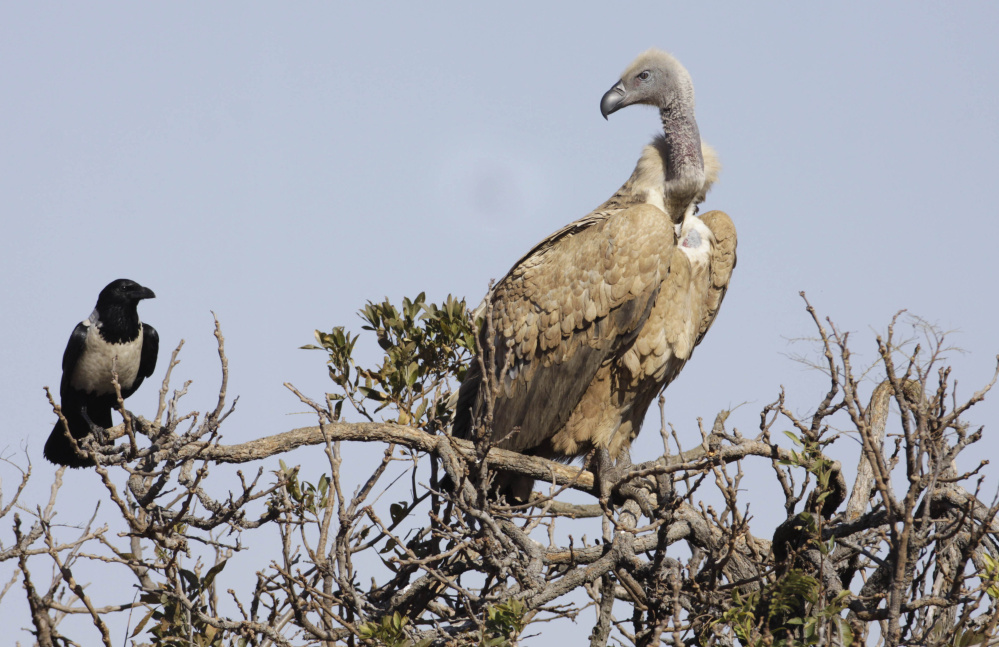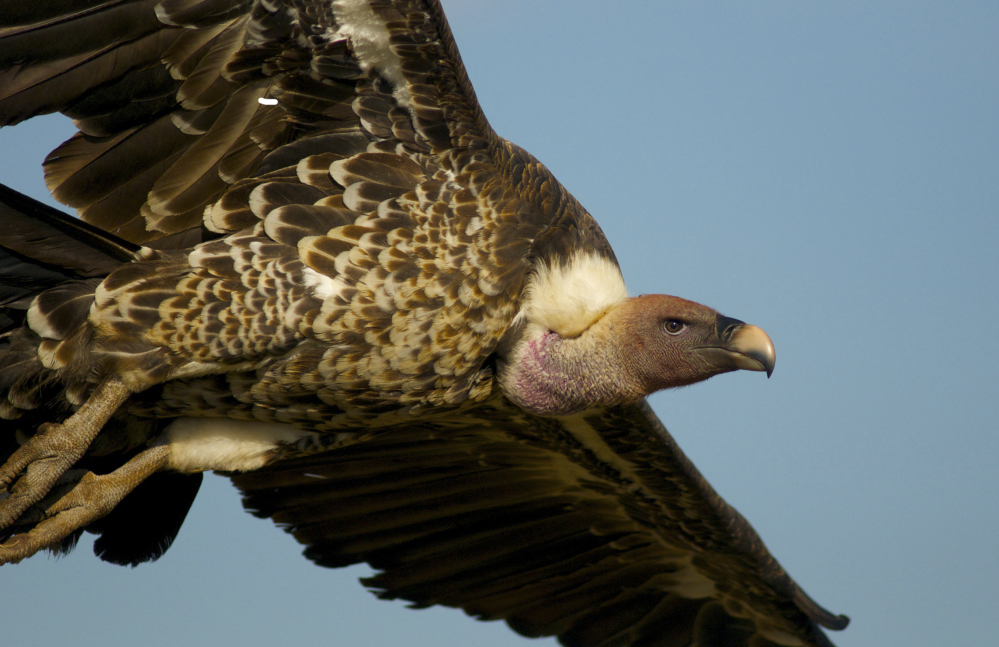MAGADI, Kenya — These are tough times for African vultures. Already perceived as ugly and saddled with being a symbol of death and decay in many cultures, their numbers are dropping because of poaching, poisonings and collisions with electricity pylons and wind turbines.
Four of Africa’s 11 vulture species were listed as critically endangered this year on an international “red list” of species under threat. The populations of seven of those species declined by at least 80 percent in the past 50 years, according to a study published this year in the journal Conservation Letters.
But how many people really care about such a creature? Mark Twain saw one and described it as having a “bald, red, queer-shaped head, featherless red places here and there on his body, intense great black eyes set in featherless rims of inflamed flesh.”
Vultures are overshadowed by threatened “sexy, charismatic species” like the lion, rhinoceros and elephant, said Masumi Gudka, Kenya-based vulture conservation manager for BirdLife International, a group with branches in 120 countries.
“You have to be creative” in the hunt for an “innovative way to sell the species that people think are ugly,” Gudka said.
Vultures get a bad rap because they gather around the dead and the dying. In the poem “Vultures,” Nigerian writer Chinua Achebe describes the seeming contradiction between a vulture nestling affectionately with its mate in a tree and their ghastly feeding on the eyes and bowels of a swollen corpse in a trench filled with water.
Vulture body parts are precious in traditional medicine in parts of Africa. Some people believe they cure disease, increase children’s intelligence and guarantee success in business and gambling, making the birds a target for poachers.
Threats also include poison laid to kill wild dogs or other mammals that attack livestock. Additionally, rhino and elephant poachers sometimes poison vultures because they circle above carcasses, possibly giving away their location to rangers. At least 1,500 vultures died in 10 such poisoning incidents between 2011 and 2014 in southern Africa, according to bird conservationists.
South Asian vulture populations are also a small fraction of what they were, largely because of feeding on carcasses of livestock treated with diclofenac, a veterinary drug that is toxic to vultures.
Copy the Story LinkSend questions/comments to the editors.




Success. Please wait for the page to reload. If the page does not reload within 5 seconds, please refresh the page.
Enter your email and password to access comments.
Hi, to comment on stories you must . This profile is in addition to your subscription and website login.
Already have a commenting profile? .
Invalid username/password.
Please check your email to confirm and complete your registration.
Only subscribers are eligible to post comments. Please subscribe or login first for digital access. Here’s why.
Use the form below to reset your password. When you've submitted your account email, we will send an email with a reset code.